Review: Anker PowerCore II 10000
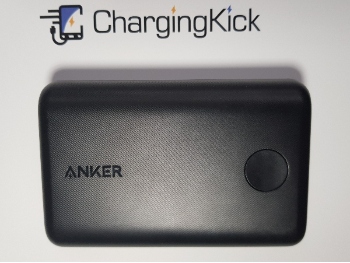
The Anker PowerCore II 10000 is one of the most popular medium-size power banks. It has more than 7,000 reviews on Amazon USA (4.7/5 average rating). Tens of thousands of satisfied users indicate a high-quality product. How good is the PowerCore II 10000? Read on to find out.
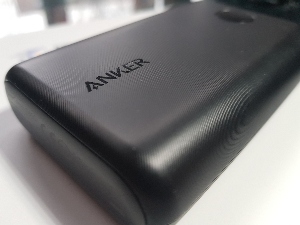
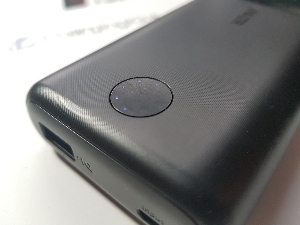
Pros & Cons:
Pros:
High-quality material
Minimalistic design
Very small size and weight
Fast charging and recharging speed
Enough to charge most phones at least twice
Cons:
It’s missing an additional USB port for charging two phones simultaneously
Micro USB port for recharging instead of USB-C
Rating
Power & Performance (1 to 5 stars)
Design & Build (1 to 5 stars)
Technology (1 to 5 stars)
Overall Rating (average of above)
Key Product Specifications
Key Specs:
Capacity
10,050 mAh / 36.18 Wh
Dimensions (LxWxH)
3.8 x 2.4 x 0.9 in / 9.6 x 6.2 x 2.2 cm
Weight
6.9 oz / 195 g
Output & Input Charging:
Average Charging Time of a Mobile Phone (average battery capacity 3000mAh)
1 hour and 25 minutes
Average Recharging Time (from 0% to 100%)
With a faster charger 3 hours and 40 minutes; with a standard charger 5 hours and 20 minutes
Ports
Micro USB Input (PowerIQ 2.0): 5V/2A, 9V/2A (18W)
USB-A Output (PowerIQ 2.0): 5V/3A, 9V/2A, 12V/1.5A (18W)
Charging Technology
PowerIQ 2.0
Compatible with Quick Charger
VoltageBoost
Flight Status
Under 100WH
Safe to take on board.
Other Features
18-Month Limited Warranty
Lifetime Technical Support
Ideal For?
Travelers
Students
Adventurers
Commuters
Businesspeople
What’s Inside?
The Anker PowerCore II 10000
Protective pouch
USB-A to Micro-USB cable
Manual in multiple languages
Welcome card

Power & Performance
Battery Capacity
Battery capacity in mAh and Watts
The Anker PowerCore II 10000 has a battery capacity of 10,050 mAh / 36.18 Wh. This amount of energy should be enough to charge most phones 2 or 3 times.
Capacity test: discharge the fully charged power bank
Have you ever wondered whether a power bank has its battery capacity? Does it really have 5,000 mAh or 10,000 mAh, as advertised? What is the real battery capacity?
To check the actual battery capacity we need:
The fully charged power bank
A USB tester that shows the current, voltage, mAh, and charging time.
The USB mini adjustable load receives energy from the power bank and releases it safely via the fan. This is the safe way to discharge a fully charged power bank and measure the real battery capacity.
I connect the adjustable load (amperes are set to 2) to the USB tester, then plug it into the fully charged power bank. Once that’s done, I wait until the power bank’s battery goes flat. The screen on the USB tester will display the Watt-hours and the amount of mAh consumed. These data show the real battery capacity.
Using the aforementioned procedure, I tested the Anker PowerCore 10000. Here are the results:
Capacity Test
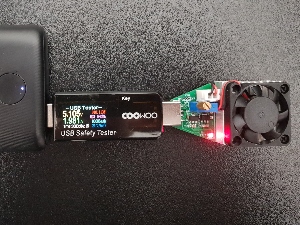
Results
What I found out:
Discharge Time - 3 hours and 4 minutes
Watt-Hours - 31 Wh
Ampere hour - 6,086 mAh
The real battery capacity is 6,086 mAh. This mAh measurement shows you the energy you will fully use to charge your mobile phone. It’s not 10,050 mAh because the unit is converting energy from 3.7V (the power bank’s battery voltage) to 5V (USB voltage). This loss occurs in every power bank.
When you know the advertised and real battery capacity, it’s possible to measure the battery efficiency, which in this case is 82%. Manufacturers frequently don’t share this information. Efficiency above 90% is considered very good. It’s a decent score, but Anker is known for high-quality batteries and I expected a slightly better result.
Disclaimer: Every test can produce different results, but only small variations.
How many times can you charge the most popular mobile phones in 2020?
To put the battery capacity into perspective, I will use a formula for Real Battery Capacity and calculate how many times The Anker PowerCore 10000 can charge the top 10 most popular mobile phones in 2020. Perhaps you own one of them, or at least you know your mobile phone’s battery capacity.
From the previous test, we know the real battery capacity is 82%.
Once we know the real battery capacity, we simply divide it by the enlisted mobile phones’ battery capacity to find out how many times it can be charged.
Mobile Phone Model | How Many Times Can It Be Charged? |
4.61 | |
3.05 | |
2.88 | |
2.88 | |
3.24 | |
7.13 | |
2.88 | |
4.13 | |
3.09 | |
2.60 |
The Anker PowerCore II 10000 is a good option for phones with batteries of 4,000 mAh and less. You should easily get at least two full charges. For phones with batteries of more than 4,000 mAh, it might not be sufficient. It’s worth having a power bank that gives you at least two full charges.
Output Charging
Charging Time & Power Usage
Power banks are used mainly to charge devices. Therefore, this review would not be completed without testing output charging. For this, knowledge of the device’s charging time is crucial. Frequently it is one of the most important factors in the purchase of a power bank.
For these tests, I used two mobile phones:
Huawei P10 with a battery of 3200 mAh (Huawei SuperCharge)
Samsung S8 with a battery of 3000mAh (Adaptive Fast Charging)
Both phones support fast-charging technology.
To record data (current, voltage, mAh, time) I used a USB tester.
Real-life examples of test-charged phones demonstrate what you can expect after purchasing a power bank.
The Anker PowerCore 10000 is equipped with PowerIQ 2.0 that enables a maximum output of 18W. This is the fast-charging speed. The manufacturer claims the device is compatible with Quick Chargers. That said, I expect that both mobile phones will get an extra boost and will charge at a faster than normal speed. The fully charged power bank should easily charge both mobile phones fully.
Charging via USB-A (Huawei)
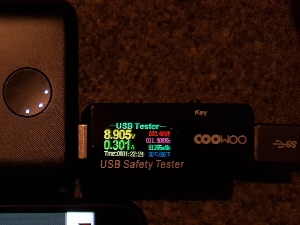
The fast charging is as promised! The Huawei P10 charged at an output rate of 8.8V/1.7A. It took 1 hour and 22 minutes to charge the phone to over 90%, a decent result. The power bank delivered 11.9 Wh. Sadly, my USB Tester doesn’t show accurate mAh if the voltage is above 5V. However, using the formula (Wh)*1000/(5V) = (mAh), we can calculate Ampere/hour. The result is 2380 mAh.
Charging via USB-A (Samsung)

Surprisingly, the Anker PowerCore 10000 didn’t detect fast charging in the Samsung S8. The phone charged at the normal speed of 5V/1.8A. It took nearly 1 hour and 31 minutes to charge the phone to nearly 100%. It’s still a decent result. The power bank delivered 2,153 mAh / 11Wh.
A roundup of output charging
With PowerIQ 2.0 and a maximum charging output of 18W, the Anker PowerCore successfully delivered energy to Huawei P10 at fast-charging speeds. Unfortunately, the Samsung S8 wasn’t that successful but still charged in a good time. With a real battery capacity of over 6,000 mAh, the power bank should charge each phone almost 3 times.
Input Charging
The Anker PowerCore 10000 has one Micro USB port for recharging. It’s rated at 5V/2A and 9V/2A. It has PowerIQ 2.0. The manufacturer claims the power bank can be recharged within 4 hours with a quick charger and in a maximum of 5 hours with a standard 5V/2A charger.
I charged the power bank twice. The first test, via a standard charger rated at 5V/2A charging speed; a charger most of us have. For the second charge, I used the charger rated 65W, the fastest type of charger, able to charge compatible laptops.
Recharging via Standard Charger 5V/2A
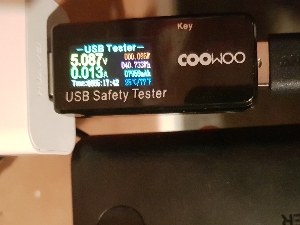
It took 5 hours and 17 minutes to reach full charge. Slightly more than the manufacturer’s claims, but an extra 15 minutes is no big deal. The power bank received a total of 7,959 mAh / 40.7 Wh.
Recharging via Fast Charger
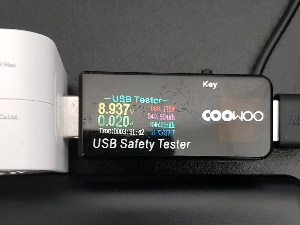
It took 3 hours and 31 minutes to charge the power bank from 0% to 100%! An amazing score, even better than the manufacturer promised. The charger delivered 40.5 Wh or around 8100 mAh.
A roundup of input charging
Overall, the Anker PowerCore 10000 exceeded my expectations. A power bank with this battery capacity that can recharge within 3 and a half hours is BIG.
Score
Design & Build
Dimension & Weight
Weight in ounces and grams
6.3 oz / 195 g
Measurement in inches and centimeters
3.8 x 2.4 x 0.9 in / 9.6 x 6.2 x 2.2 cm
The Anker PowerCore 10000 might be one of the smallest power banks for its capacity. It’s small enough to keep in a pocket or a small compartment in a backpack or purse. It weighs slightly less than most power banks with this capacity.
Design & Material
The Anker PowerCore 10000 features a typical Anker design: it’s minimalistic and well-built.

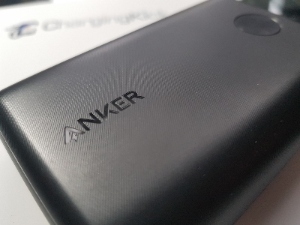

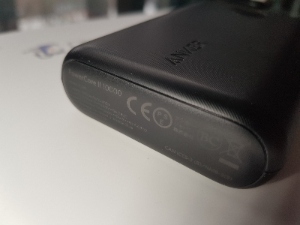
The PowerCore is made of high-quality plastic and consists of two large front pieces on the front and back, and two side panels. When it’s in your hand, you can feel it’s well-made. All parts stay in place. It feels good, slightly coarse, and it doesn’t leave fingerprints. It’s not rugged, but very solid.
It has a rectangular shape with rounded corners. On the front side at one end is Anker’s logo, and on the other side is the power button. Once pressed, 8 LED lights turn on to indicate the available energy. Most power banks have only 4 lights. Eight 8 lights make it easier to estimate available energy. Above the power button on the side are two USB ports: a Micro USB for input charging and a USB-A for output charging.
The power bank is available only in black.
Score
Technology
Ports
The Anker PowerCore 5000 has two USB ports. The first is a Micro USB for input charging, and the second is USB-A for output charging. Some power banks in this capacity have two USB-A ports and can recharge two phones simultaneously; this is a useful feature that this model lacks. A USB-C port would be a better option than a Micro USB port.
Micro USB Input (PowerIQ 2.0): 5V/2A, 9V/2A (18W)
USB-A Output (PowerIQ 2.0): 5V/3A, 9V/2A, 12V/1.5A (18W)
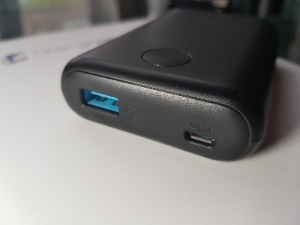
Tech
The PowerCore 10000 uses Panasonic battery cells characterized by a superior conversion rate. The lithium-ion batteries usually found in power banks can’t provide this. Panasonic batteries last longer as well.
Anker’s PowerIQ automatically detects the maximum charging speed of a plugged device. Along with VoltageBoost, this keeps voltage stable during charging, making this device highly efficient.
The tests have already shown what this device is capable of.
Score
Conclusion
Overall Opinion
The Anker PowerCore 10000 is the top power bank in the medium-size battery category. Its small size, superb quality, and fast recharging and charging times are its most noteworthy features. An additional USB port for output charging could be a game-changer. However, even without it, if you’re looking for a small and highly efficient power bank, this should be your choice.